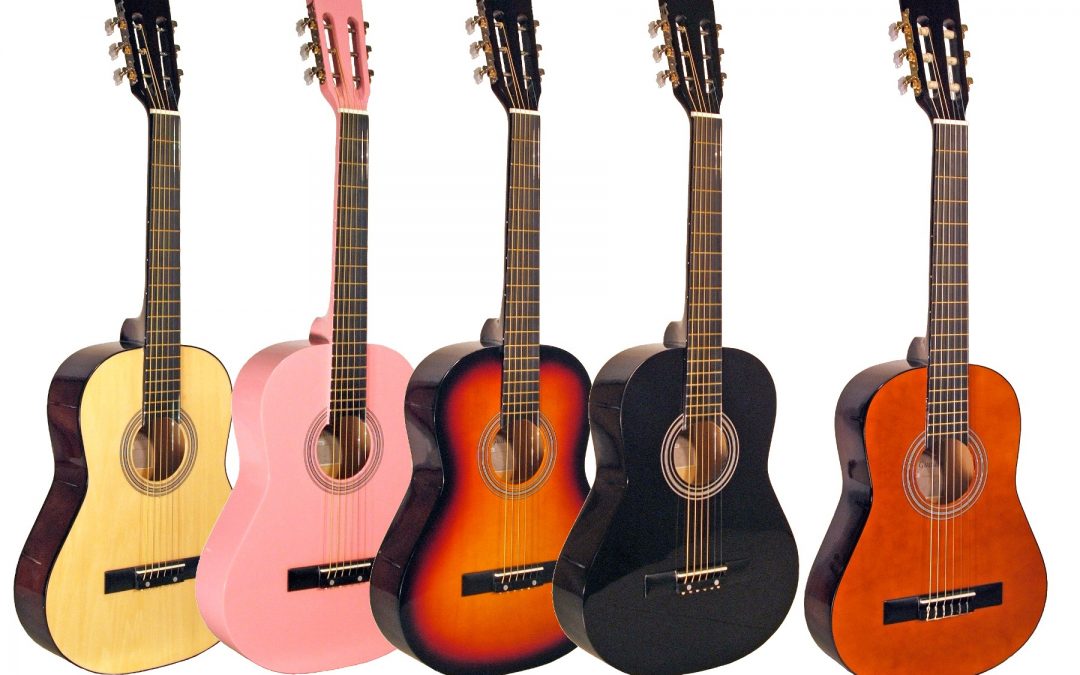
What to Look For In a Good Cheap Guitar
 I recently got an email from one of my coworkers who wanted to know what she should be looking for in a good used guitar in the $100 range. I thought I’d share the answers with you, because people get asked this a lot and it’s one of the most common questions a new guitar player asks:
I recently got an email from one of my coworkers who wanted to know what she should be looking for in a good used guitar in the $100 range. I thought I’d share the answers with you, because people get asked this a lot and it’s one of the most common questions a new guitar player asks:
Hi Gene,
I’m going to start looking for a full-sized guitar, for myself.
In looking at used guitars, what brands do you think are better than others? Or, does it matter?
I’m going to try and find something that is around $100.
At the $100 price point, your best measure of the quality of a guitar is you. You can often get a little better quality if you get a used one rather than a new one, but here are things to look for:
- Does it feel right in your hands? Everybody’s hands are different, so get a guitar that feels good in yours.
- Does it sound right (even playing all the way up the neck)?
- Does it have a cutaway so you can reach the high notes (if that’s important to you)?
- Are the machine heads (the tuning heads) firm or do they slip or rattle? (“What the – where’s that buzz coming from??”)
- How high are the frets compared to the fretboard? Taller frets make a guitar harder to play than slimmer frets and will require more energy to get a clean sound out of them. The difference can be small, and you can often only see this by comparing one guitar to another.
- Does it speak well? Some guitars are quieter or sound tinny compared to others, some guitars are brighter, or have a stronger bass content in their voices. Remember that there are things you can do to make a guitar’s voice change depending on how you play it, but that its fundamental character will remain fairly constant.
- Does it have a truss rod in the neck so that the bow in the neck can be adjusted? Surprisingly, some at this price point don’t. A guitar with a truss rod in the neck will have a little hex bolt head inside the sound hole just under the end of the fretboard.
After that it’s more like picking out a comfortable pair of shoes than anything else. Listen to the guitar’s voice, and find one that sounds like an old friend. That’s the guitar you’re going to get the most out of.
Brands to look for are Taylor, Martin, Ovation, Yamaha, Fender – but there are dozens more really excellent brands, and again, at this price point the well known name brands are as likely to be lemons as any other guitar.
If I get a nylon string guitar, will it have the same great twang as your guitar? Or, will it always be softer?
No, it will always be softer. Nylon is uncommon, most guitars are steel string. They have an inherently softer sound than metal does, and they tend not to break strings as often (but a guitar string usually costs a bit under $2 and can last years).
I just don’t want it to sound like a harp, like the little 1/2 size guitar that’s my daughter’s. And, if I buy a nylon string guitar, can I get it strung with steel strings, in the future? Or, is the guitar just made for one type of strings?
A guitar is made for one particular kind of string, and you can’t use nylon strings on a guitar made for steel strings, and vice versa.
That said, I used a Kawasaki nylon string guitar (with no truss rod in the neck) for about 25 years before it finally broke in half on its own standing against the wall one day, just from the string tension.
A last point to mention is that at the $100 price point, adding an extra $20 – $60 can make a huge difference in the quality of the guitars in your price range.
Guitars can range from a hundred or so into the thousands of dollars. The difference between a $100 guitar and a $150 guitar can be substantial – the difference between a $2000 guitar and a $3000 guitar may be one only a professional musician could appreciate.
Good luck in your search!
– Gene Turnbow

Recent Comments